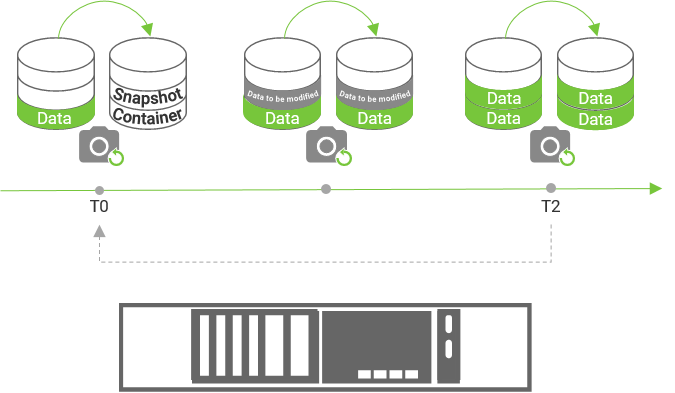In the previous article, we mentioned how to use core data protection to prevent data threats and achieve 0 RTO / RPO. Unfortunately, if data threats still occur, the fastest way to restore service is local recovery. Through local snapshots and combined with remote backup protection. Through local snapshots, the device can be quickly recovered. Combined with Remote backup protection, helping you achieve in-depth defense.
What is Fast Local Recovery
When the enterprise system suffers data threats, downtime starts ticking. The sooner the service is restored, the less financial loss the business will suffer. A complete quick local recovery plan should include:
- Fast backup without affecting service
- Fast local recovery
- Backup files should also be protected
Through local synchronization or snapshots to backup data in the local system, you can use the backup file to restore or replace the service immediately. Since backup is taking place at the local side, backup processing will be fast and resource-free. By using fast local recovery, you can easily achieve an RTO of almost 0.
What are snapshots?
Snapshots record the status of data, representing exactly what your data looked like at the moment the snapshot was taken. By taking snapshots, you can navigate through old and new data versions to recover data. With the local snapshot function, the newest generation of snapshot speediness is in your hands – equipped with the ultimate recovery performance, local snapshot is an ideal fast local recovery solution.

Making Local Recovery Backup Safer
As we mentioned earlier, local snapshot and backup are characterized by swift backup without affecting service, as well as fast disaster recovery. There are final precautions that you can take to make sure that snapshots are always safe for recovery.
- Data protection – As mentioned in the last blog, core data protection can lock your file so that they cannot be infected by any data threats. Make sure that your important backup files are locked so that even if data threats occur, you can easily unlock and use the backup file to quickly restore service.
- Backup Period – Backup can help with fast local recovery and lowering RTO. But RPO is also a concern, so the backup period is important. Set your backup schedule to real-time: which means that every second, your data will be backed up and reduce RPO to 0. By doing so, you can make sure that your service can be restored in the fastest way and suffer minimal losses.

A Complete Backup Plan
Remember that snapshots are just one of many backup methods if the situation is getting worse and your entire system is down. You may need a Plan B: a complete backup plan should always include several remote backup sites as insurance. That’s why the next post in this series will focus on the worst scenario: data threats taking down your local system. We will show you how to plan strong remote backup protection to quickly recover from the situation.
The blog post is the first in our QSAN Security Trilogy that discusses the importance of local fast recovery and data security. By following the QSAN Security Trilogy, you can recover quickly from an attack and avoid business downtime.
It is best to read and follow along with the Trilogy in its sequential order:
- Core Data Protection that you can use for preventing any data threats.
- Smart Quick Local Recovery helps you shrink RTO to a minimum.
- Offsite Recovery protects your service even when your local system is attacked.
To learn more about the QSAN Security Trilogy for ransomware, please check out these additional resources:



